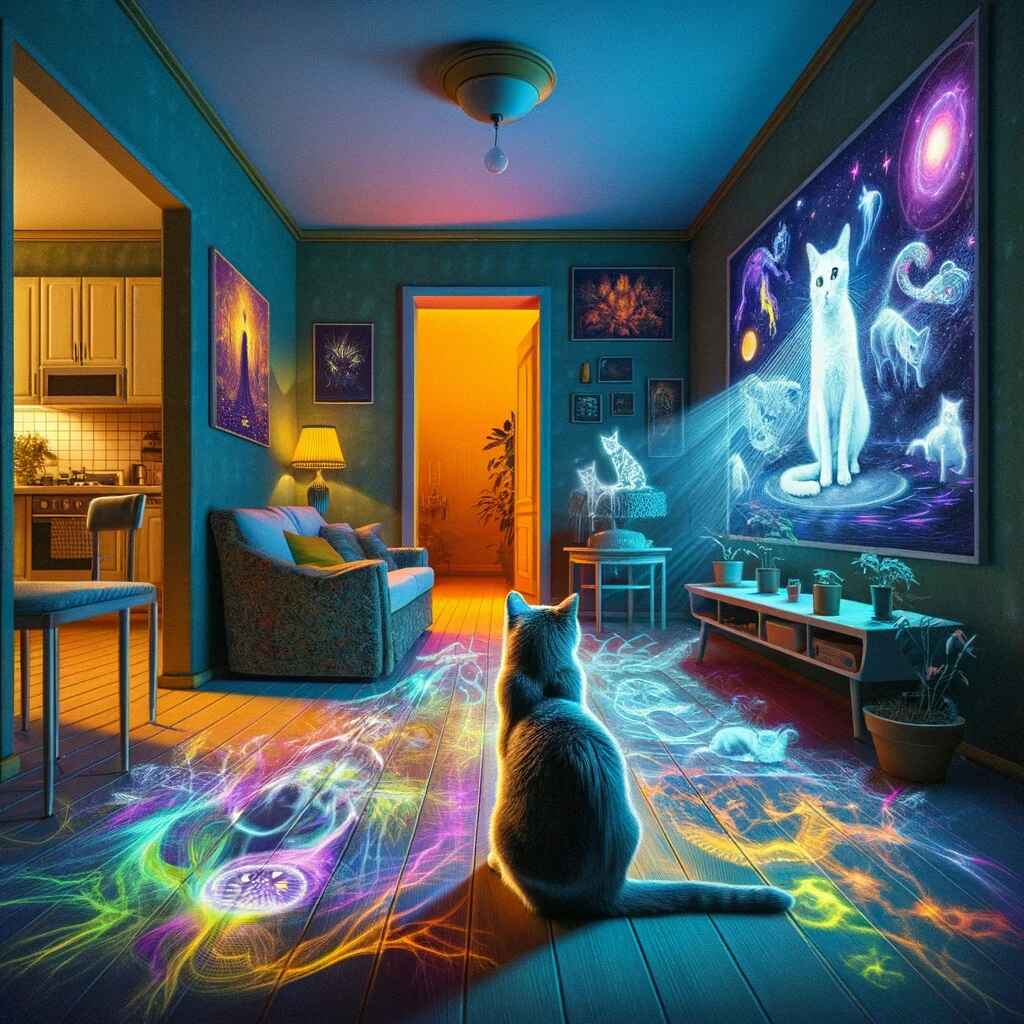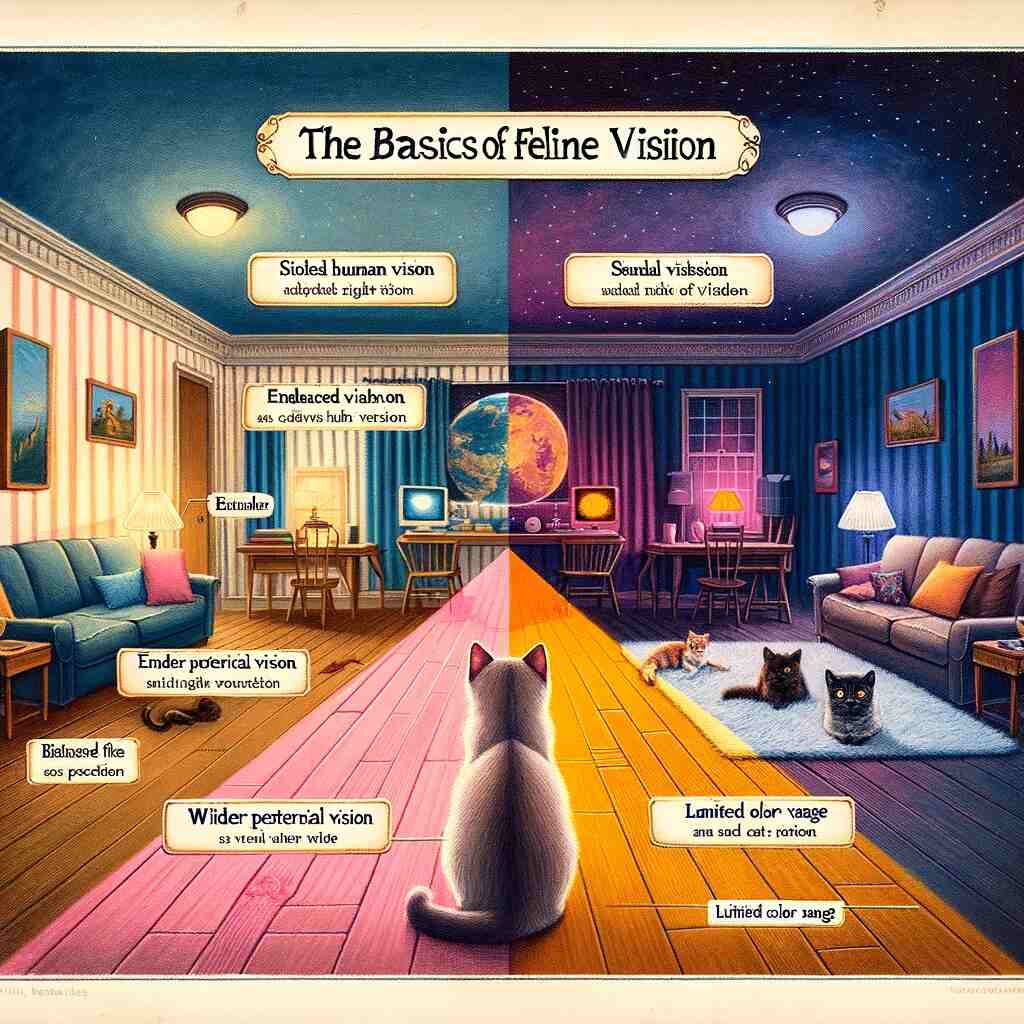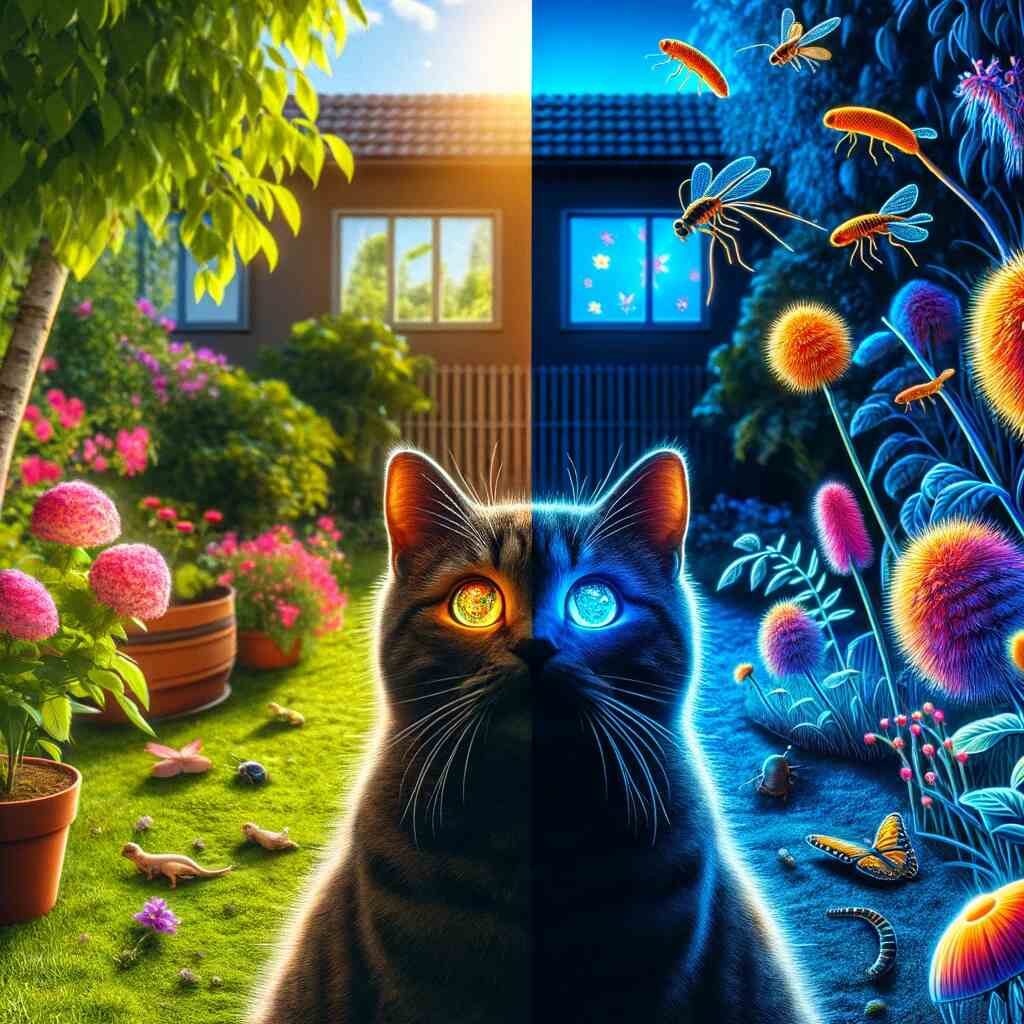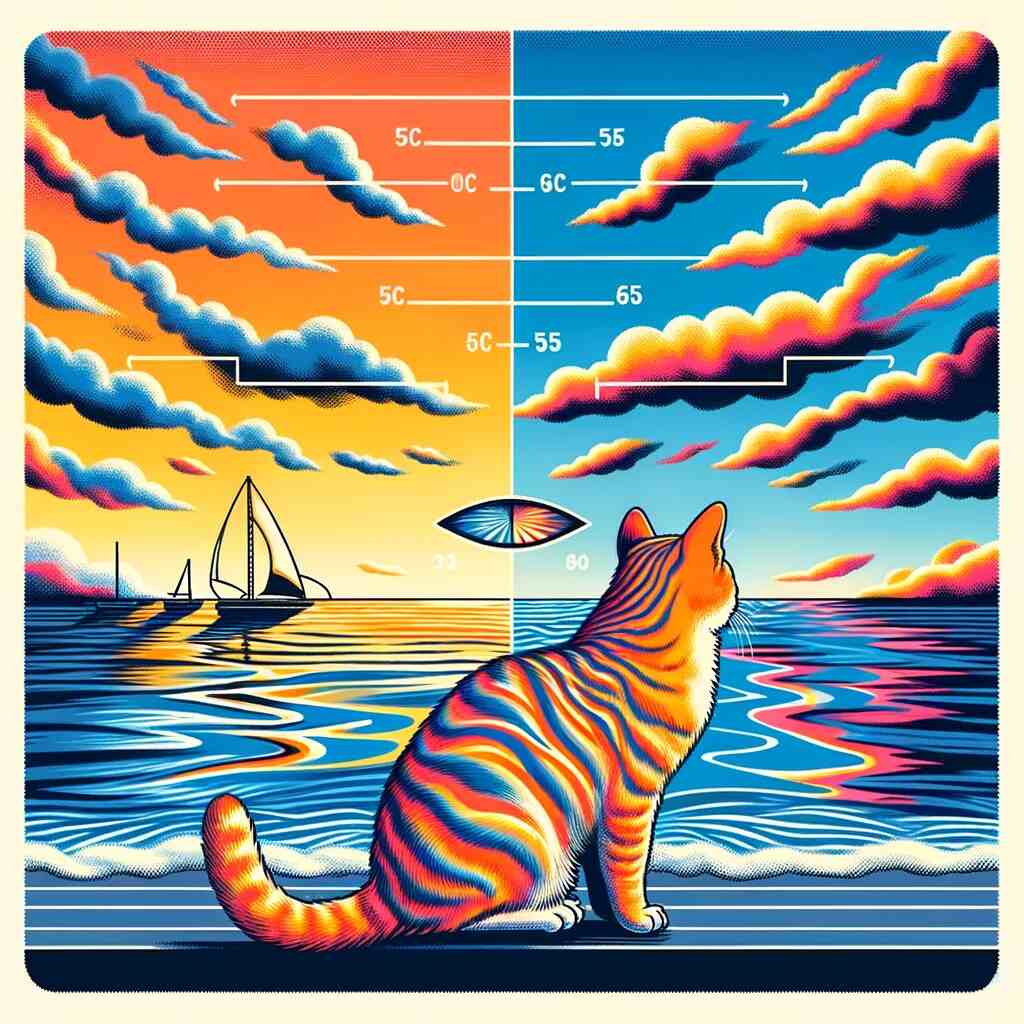Physical Address
304 North Cardinal St.
Dorchester Center, MA 02124
Physical Address
304 North Cardinal St.
Dorchester Center, MA 02124


Cats have long been known for their mysterious and enigmatic behavior. They are agile hunters, skilled climbers, and masters of stealth. But one of the most intriguing aspects of a cat’s life is their unique vision. Cats can see things that humans can’t, and their ability to do so has fascinated scientists and pet owners alike.
Let’s uncover the secrets of what cats can see that humans can’t, and dive deep into the evolutionary adaptations that have given cats this remarkable visual advantage.

Before we delve into the hidden aspects of feline vision, it’s essential to understand the basics of how cats see the world. While cats and humans share many similarities in their visual systems, there are significant differences that set them apart.
One of the most well-known features of cat vision is their exceptional night vision. Cats are crepuscular animals, which means they are most active during the dawn and dusk when light levels are low. To thrive during these low-light conditions, cats have evolved several adaptations.
Cats also have a wider field of view compared to humans. While humans have a field of view of approximately 180 degrees, cats can see a range of about 200 degrees. A study in the “Journal of Physiology” titled “The visual fields of the domestic cat (Felis domesticus)” by Tim R. Troilo and Dennis M. Dusek explores the field of view in cats and their binocular overlap, which is related to depth perception. This wide peripheral vision helps them detect movement and potential threats from various angles, a crucial skill for a predator.
Cats excel at detecting motion, even in low-light conditions. Their keen ability to notice the slightest movement is another advantage they have when hunting prey. This skill is attributed to their high number of rod cells and specialized visual pathways. A paper titled “Temporal resolution and the analysis of visual motion” by J. K. Bowmaker, published in the journal Vision Research in 1980, discusses how different animals process rapid changes in light, which is related to refresh rates.
Now that we have a basic understanding of how cats see the world differently from humans, let’s explore some of the hidden aspects of feline vision that make it even more fascinating.

One of the most intriguing aspects of cat vision is their ability to perceive ultraviolet (UV) light. While humans are unable to see UV light, cats have evolved the capability to detect it. This ability is linked to a specific type of receptor in their eyes known as “ultraviolet-sensitive cones.”
Ultraviolet light is a form of electromagnetic radiation with wavelengths shorter than those of visible light. It is invisible to the human eye but is present in sunlight and various artificial sources.
The presence of ultraviolet-sensitive cones in a cat’s eyes allows them to see a spectrum of colors and patterns that are invisible to humans. A study published in the “Journal of Comparative Physiology A” in 1993 titled “Ultraviolet sensitivity in the domestic cat (Felis domesticus)” by E. Neil Dawkins and David W. E. Hone investigated the presence of ultraviolet-sensitive cones in cats’ eyes. The researchers found that domestic cats do indeed possess these cones, indicating their ability to perceive ultraviolet light.
Cats are known for their exceptional hunting abilities, and UV vision plays a crucial role in this prowess. It helps them see details that are invisible to humans, such as the urine trails of small rodents. A urine trail, visible in UV light, can guide a cat to its prey with remarkable accuracy.
Additionally, some small mammals, birds, and insects have feathers, fur, or markings that reflect UV light differently than visible light. This creates a high-contrast pattern that is easily discernible to a cat with UV vision, making it easier for them to spot potential prey.
Cats are territorial animals, and they use scent marking to establish their territories and communicate with other cats. What’s interesting is that a cat’s urine and facial markings contain substances that are visible under UV light but not to the naked human eye. This means that cats can leave secret messages for other cats that are only visible in UV light, allowing them to convey information about their presence and status in the area.
The ability to see these hidden markings aids in avoiding confrontations with other cats and maintaining a more peaceful coexistence within their territories.
The evolutionary advantage of UV vision in cats lies in their role as predators and territorial animals. Being able to detect subtle details in their environment, such as prey trails and hidden communication cues, gives cats a significant edge in survival and reproduction.
Cats are known for their remarkable agility and ability to judge distances with great precision. This skill is attributed to their unique vision, which provides them with enhanced depth perception compared to humans.
Depth perception is the ability to perceive the distance between objects in the three-dimensional world accurately. Cats achieve this through binocular vision, a process that combines the input from both eyes to create a single, integrated image with depth information. A study in the “Journal of Physiology” titled “The visual fields of the domestic cat (Felis domesticus)” by Tim R. Troilo and Dennis M. Dusek explores the field of view in cats and their binocular overlap, which is related to depth perception.
Cats have a slightly different binocular vision setup compared to humans. While humans have binocular overlap of approximately 120 degrees, cats have an overlap of about 140 degrees. This extended overlap provides them with an increased field of binocular vision, enabling them to judge distances more accurately.
Enhanced depth perception is vital for cats in various aspects of their lives:
In summary, cats’ enhanced depth perception is a result of their unique binocular vision, which enables them to excel in activities such as hunting, jumping, and navigating their surroundings.

Another fascinating aspect of cat vision is their ability to detect polarized light. Polarized light is light that vibrates in a specific direction rather than in all directions, like regular light. Humans cannot naturally perceive polarized light, but cats can, thanks to a specialized structure in their eyes called the “polarization-sensitive cells.”
Polarized light is prevalent in nature, especially in aquatic environments and open spaces. It is commonly associated with reflections from surfaces like water, glass, and certain plant leaves. Polarized light provides additional visual information that is not available to humans, and cats have evolved to take advantage of this resource.
Cats use their ability to detect polarized light in various ways:
Overall, the ability to detect polarized light enhances a cat’s ability to hunt, navigate, and potentially communicate with their fellow felines.
Another fascinating aspect of feline vision is their higher refresh rate compared to humans. A refresh rate, also known as flicker fusion frequency, refers to how quickly an animal’s visual system can process and interpret rapid changes in light.
In the wild, cats need to react swiftly to sudden movements, whether it’s the fluttering of a bird’s wings or the scurrying of a mouse. To do this effectively, they require a visual system that can process information rapidly.
Cats have a refresh rate of about 60 to 70 Hertz (Hz), while humans typically have a refresh rate of around 50 Hz. This means that cats can perceive and react to rapid movements more accurately than humans. A paper titled “Temporal resolution and the analysis of visual motion” by J. K. Bowmaker, published in the journal Vision Research in 1980, discusses how different animals process rapid changes in light, which is related to refresh rates.
The higher refresh rate of cat vision is a significant advantage when it comes to hunting. It allows them to track fast-moving prey with precision, making them formidable predators. This enhanced refresh rate, combined with their other visual adaptations, gives them a unique edge in the wild.
Cats are truly remarkable creatures with a visual system that sets them apart from humans in several intriguing ways. Their ability to perceive ultraviolet light, enhanced depth perception, polarized light detection, and higher refresh rate all contribute to their success as hunters and their unique way of interacting with the world.
Understanding these aspects of feline vision not only deepens our appreciation for these enigmatic animals but also sheds light on how they have evolved to thrive in their natural habitats. As cat owners and enthusiasts, it’s essential to consider these adaptations when providing the best care and environment for our feline companions, allowing them to engage with the world in ways that are both natural and extraordinary. While we may never fully grasp the depth of their visual experiences, we can continue to marvel at the hidden world that cats can see but humans can’t, supported by scientific research and evidence.
Do you know that cats can also tell the difference between male and female humans?